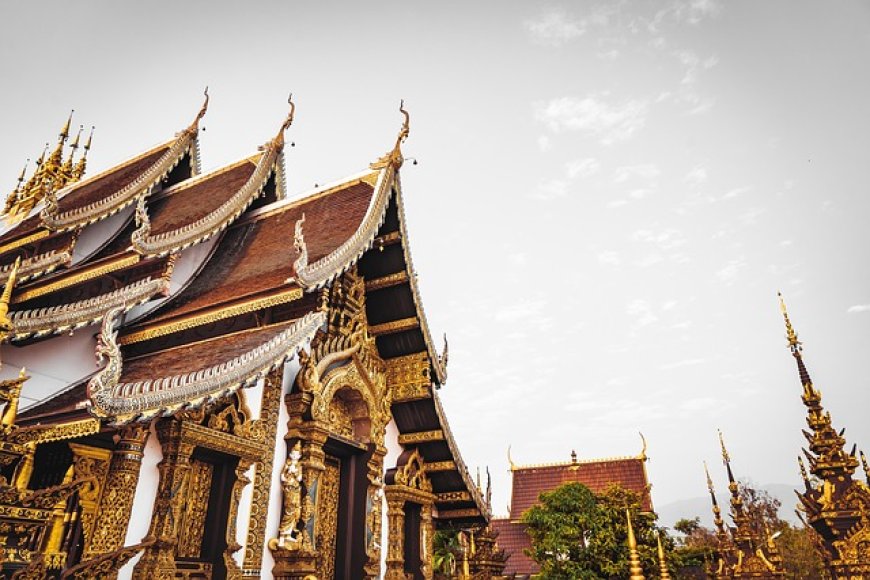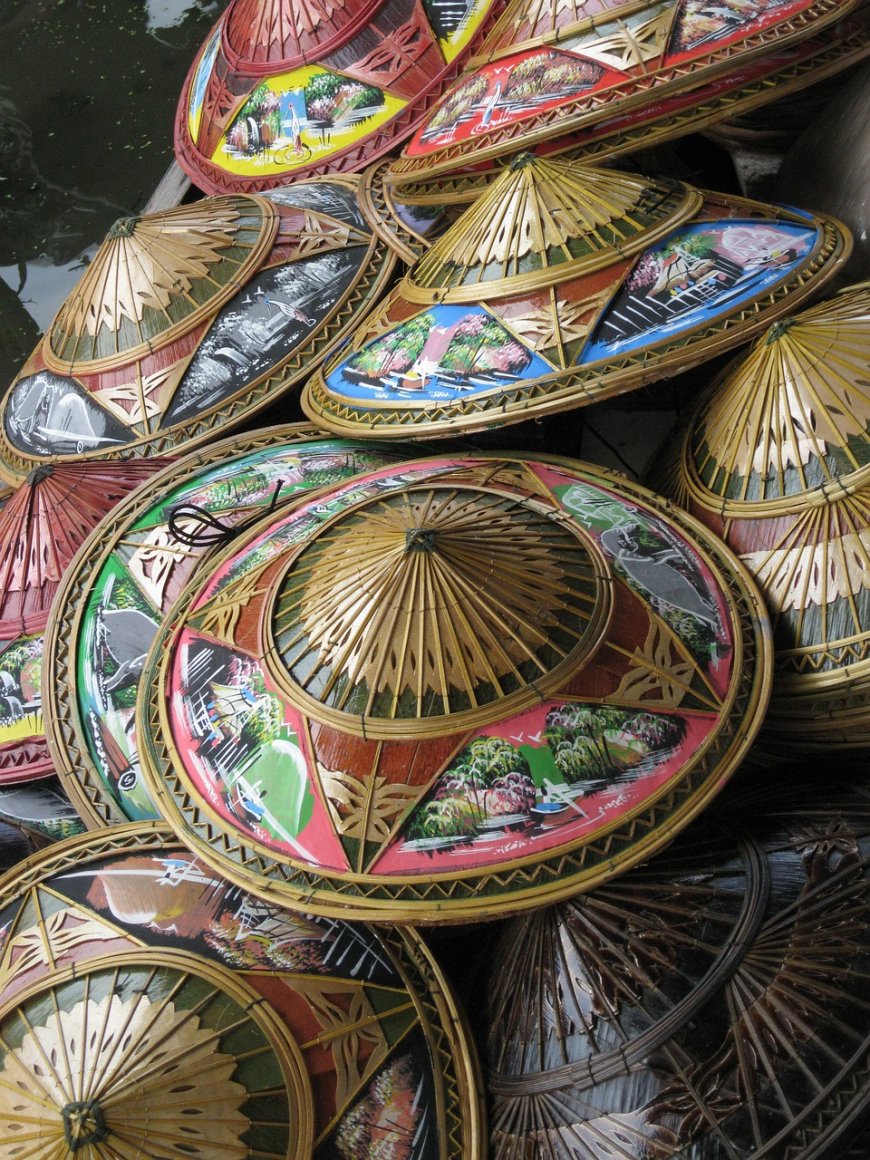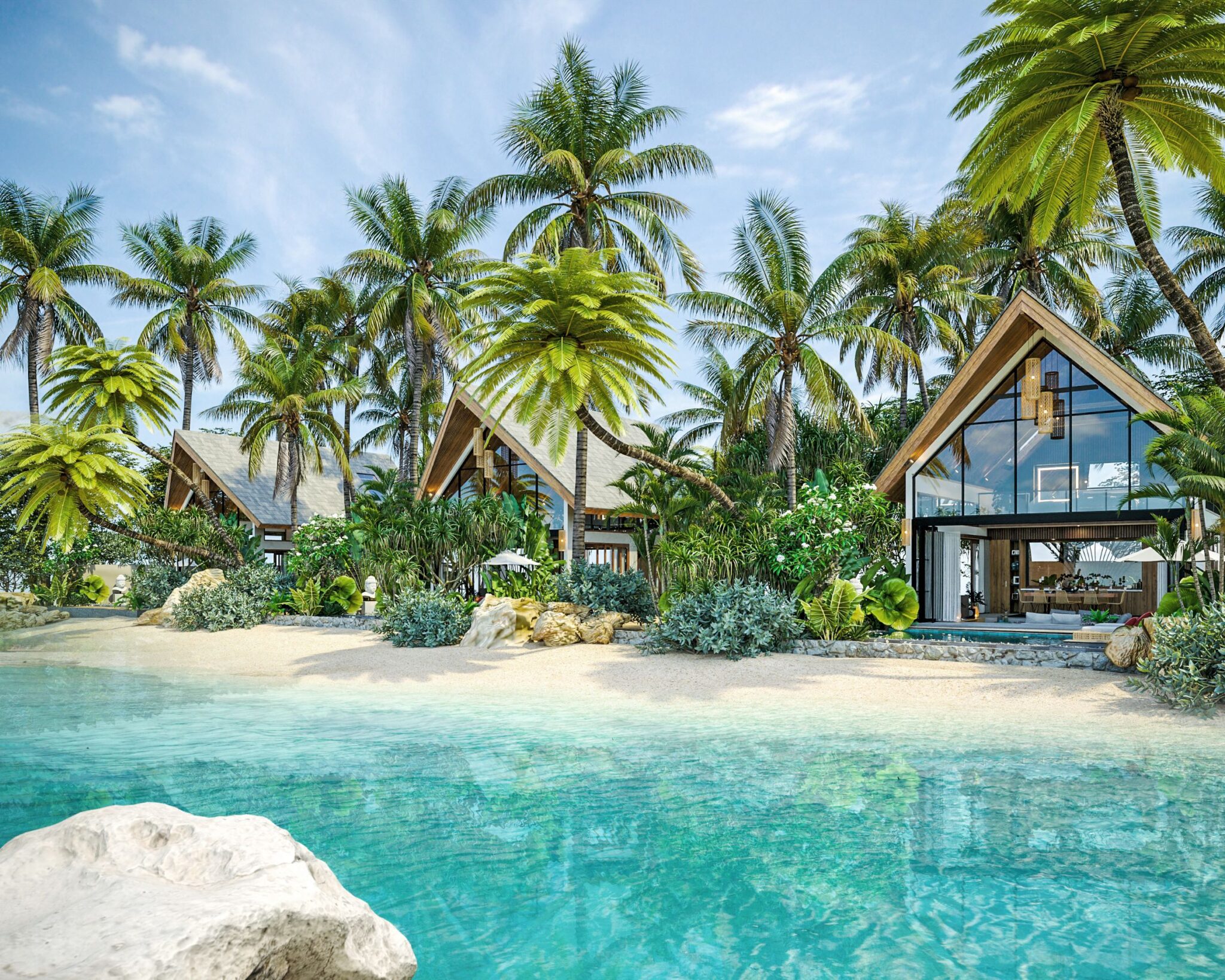Bangkok Culture and Tradition: A Deep Dive into the City's Unique Heritage
Discover Bangkok's rich culture and tradition, from sacred temples to lively festivals, offering a deep dive into the city's history and heritage.

Bangkok is a vibrant metropolis where tradition and modernity stand shoulder to shoulder in perfect harmony. Bangkok, a megalopolis where pulsating street life strikes a balance with striking temples, incorporates past and present in kaleidoscopic cultural scenery. The culture and heritage of Bangkok bear an intimate relationship with its history, religious faiths, aesthetic traditions, and day-to-day life of the citizens. The theme of this paper is to review the specificity of Bangkok's culture and tradition as an exciting heritage and customs in the world.
About The Place
Bangkok is the capital and the most populous city of Thailand. It is among the wonders of most fantastic tourist destinations in the world. There are a number of temples combined with bustling street markets in this city.
Cultural History of Bangkok

Bangkok, which the Thai people referred to as "Krung Thep," had served as a political, economic, and cultural center in Thailand since 1782, when the dispensation declared it to be the capital. The city's culture underwent numerous changes, influenced by neighboring countries, Western colonial relations, and an intense native heritage.
Bangkok is traditionally said to bear the culture and traditions dating as far back as the Ayutthaya Kingdom, 1351-1767; after it fell came the Thonburi Kingdom, followed by the Chakri Dynasty, which still reigns. As Bangkok was a city where different people of various regions coexisted together, constituting people belonging to Chinese, Indian, Malay, and other Western cultures, the town naturally turned into a busy metropolis where all forms of representation flowed in and mixed. This melange formed the customs, arts, and traditions peculiar to Bangkok today.
1. Religious Influence on Bangkok Culture and Tradition

Religious belief plays a vital role in shaping the cultures and traditions of Bangkok. The Theravada religion highly influences the city since it is the religion of a more significant number of its inhabitants. It is not only a factor in spiritual outlook but also influences all daily activities, festivals, expression of art, and code of conduct among people.
Some of the most beautiful temples in the world, known as "wats," are found within Bangkok and further function as hotspots of culture and religion. Iconic landmarks such as Wat Phra Kaew, or the Temple of the Emerald Buddha, Wat Arun, or the Temple of Dawn, and Wat Pho, or Wat Phra Chetuphon, which is also called the Temple of the Reclining Buddha, are not only architectural marvels but part of Bangkok's heritage and tradition. These temples offer a center for worship, meditation, and communal activities, reflecting the deep spiritualism that pervades Bangkok's culture.
In daily life, these practices are deeply intertwined in the fabric of Bangkok. It is expected to see monks in their saffron robes walking through the city, collecting alms from devoted Buddhists who believe doing good deeds will improve their karma. It is customary for the people in Bangkok to practice "tham bun," but it can better be described as merit-making. These may include but are not restricted to providing food for monks, releasing animals from captivity and participating in temple activities.
2. Festivals and Celebrations in Bangkok Heritage and Traditions
Festivals in Bangkok are full of vitality as they bring in the richness of culture and tradition in their own way. Many events meld the ceremonial aspects of religion with times of gay revelry, a fact well-illustrated by unique heritage and customs within the area.
Songkran Thai New Year: Probably the most famous festival in Bangkok, as mid-April brings in the Thai New Year known as Songkran. It is a family-oriented festival that sees people go to temples and go through traditional cleansing rites. The main event that characterizes Songkran in Bangkok is, of course, the huge water fights breaking out across town, symbolizing the washing away of the misfortunes of the past year and the restoration of a new beginning.
Loy Krathong (Festival of Lights): This falls on the moon night in November and is another major festival in Bangkok. People congregate along the rivers and canals, preparing little floating baskets with flowers, candles, and incense beautifully decorated for a launch into the water. It is a merit release for letting go of evil thoughts and beginning anew. This festival makes an example of Bangkok in its regard for water as a vital natural resource and a spiritual connection to nature. Chinese New Year: Bangkok has a large population of Chinese people in its heart, so it is one of the grand events in Bangkok. Chinatown or Yaowarat gets colored as a vibrant scene of parades, dragon dances, fireworks, and scented streets aromatized with food. Celebration of the Chinese New Year shows the multi-ethnicity aspect of Bangkok's culture and tradition.

Royal Ceremonies: Most royal ceremonies that are a part of its heritage and tradition are also held in Bangkok. The most symbolic Royal Ploughing Ceremony, held annually at Sanam Luang ground near the Grand Palace, marks the beginning of the rice-growing season and the agricultural heart of Thai culture.
3. Bangkok's Traditional Arts and Crafts

Art can be found alive in Bangkok's culture and tradition, influenced by the Ayutthaya period, Hindu mythology, and Theravada Buddhism. The traditional Thai art forms such as painting, sculpture, and dance also abound in Bangkok, a continued manifestation of the city's rich heritage and customs.
Thai Dance: Thai dance is an elegant art representing one of the great traditions at the heart of Bangkok's heritage and culture. Khon usually consists of well-dressed costumes and masks, representing aspects of the Ramakien, Thailand's adaptation of the Indian epic Ramayana. The performance is done during ceremonies, festivals, and special occasions to showcase how the city views its most crucial culture.
Thai Silk and Weaving: Thai silk weaving is one of the most treasured features in Bangkok's culture. It houses many shops and markets that enable designers and artisans to continue their work and sell items that showcase the beauty of this traditional skill passed down for generations. The Jim Thompson House in Bangkok is among those significant places where one can review the history of Thai silk and respect the city's heritage.
Traditional Thai Music and Puppetry: On the other hand, traditional Thai music, with all its peculiar instruments like "rant" (a kind of xylophone) and "khong wong" (a circle of gongs), is another crucial part of Bangkok's culture. Furthermore, Thai puppetry, especially the "Hun Lakhon Lek" style, is one specific performing art that captures Bangkok's culture through the minutest puppets and storytelling.
4. Food Traditions of Bangkok

Food in Bangkok has a lot to show about its rich culture and traditions. The city's food is highly varied, combining flavors, techniques, and influences from most regions of Thailand and internationally. Street foods play a significant role in the heritage and customs of Bangkok.
Bangkok is world-famous for its street food, offering a culinary experience and a cultural one. Vendors line up the busy streets, serving "pad thai," "som tam," or papaya salad, "tom yum goong," or spicy shrimp soup, and "mango sticky rice." This street food culture sums up life in Bangkok, which is vibrant, communal, and evolving.
Royal Thai Cuisine originates from the royal kitchens of the Grand Palace. The Royal Thai Cuisine is famous for its delicate taste and graceful presentation, prepared with care, and holds a significant place in Bangkok's culture and tradition. Dishes like "kaeng phet" or "red curry" and "Miang kham," a snack made up of betel leaves with fillings, once the exclusive domain of the royal family, are now enjoyed across the board. However, they remain part of the capital's legacy.
5. Role of Family and Social Structure in Bangkok Culture
Family is one of those essential building blocks of culture and tradition. In Thai society, the family unit is powerful, the dominating source of identity, founded on filial piety, respect for elders, and harmony with the collective. "Sanuk" in Thai means pursuing fun and enjoyment, while "mai pen rai" refers to taking things easy. These ideas are innate within the social texture of Bangkok. These cultural tenets further encourage people to live with balance, modesty, and optimism, adding to the warmness and welcoming nature Bang-kokians are known for. In addition, Bangkok's traditions and culture display class and respect for one another. Traditional Thai culture dictates the "wai," a cultural greeting in which one bows while pressing one's hands together to signify respect and humility. This is more than a simple formality in greeting; it reflects the respect and harmony at the heart of social relationships in Bangkok.
6. Bangkok's Modern Culture: A Meld of Old and New
While deeply traditional, Bangkok is indeed the city embracing change. Culture and traditions have shifted through the ages as people adapted to global influences while retaining their individuality. These days, Bangkok has an exciting arts scene with a mushrooming fashion industry and a growing interest in modern music and theater.
Places like Sukhumvit and Thonglor add modern touches to the culture of Bangkok with their hip cafes, art galleries, and loud nightlife. On the other hand, the Bangkok Art and Culture Centre was built to foster traditional and contemporary Thai arts under its wings and continue the dialogue between the past and the present.
7. Preservation of Bangkok Heritage and Customs
Bangkok's rapid modernization and urbanization create enormous obstacles to preserving its heritage and traditions. Yet, an earnest attempt in this city is being made to protect and promote its culture. Several public and private organizations in the city work toward preserving historic monuments, traditional arts, and folk customs.
Besides, efforts are being made so that the younger generation does not lose contact with their culture. Education, cultural festivals, and other community events significantly contribute to young people developing an appreciation of the unique heritage in Bangkok.
Conclusion
The culture and tradition of Bangkok have been interwoven into a powerful tapestry of history, religion, art, cuisine, and social values. Bangkok's heritage has come about through influences from different cultures and customs over the centuries. With the pressures of modernization, nevertheless, Bangkok proudly preserves its cultural identity with a balance between old and new values.
From the serenity of the temples to the grandeur of royal palaces, the hurried scurry of markets, and the street festivals, every area of Bangkok speaks of its heritage. It is in understanding the culture and tradition of Bangkok that one understands a city that is attached to its past but evolves with each passing day, gives importance to its diversity, and fosters its unique identity.
Frequently Asked Questions (FAQs)
1. What is the most critical cultural aspect of Bangkok?
One of Bangkok's most salient cultural features is its close association with Theravada Buddhism. This finds ample expression in the daily life of its people, social organization, festivals, art, and architecture. The numerous temples scattered within Bangkok referred to as "wats," which include Wat Phra Kaew and Wat Arun, are not only places of worship but also social hinges that have become symbols of Bangkok's spiritual heritage.
2. Are there any peculiar traditions or customs one should remember during a visit to Bangkok?
Travelers visiting Bangkok should be mindful of a few cultural norms and etiquette. The "wai" is one salient act where the greeter, with a slight inclination of the head, greets the other with hands pressed together in respect. Dressing appropriately and removing shoes before entering a temple is also essential. In addition, touching someone on the head or pointing the feet toward individuals or objects of religious respect is considered rude in Thai culture.
3. How does Bangkok celebrate its traditional festivals?
The traditional festivals of Bangkok are jovially enjoyed, amalgamating religious rites of passage with public merrymaking. Events include Songkran, the Thai New Year, with its citywide giant water fights, and Loy Krathong, the Festival of Lights-where various decorated baskets are put into the water to symbolize letting go of evil thoughts. Each festival brings out different aspects of Bangkok's heritage and culture and attracts locals and visitors alike in participation.
4. What role does food play in the culture and tradition of Bangkok?
Food is at the heart of the culture and tradition in Bangkok, and it ties people together, with its ranging sequences from street food to some of the most sumptuous royal Thai cuisine, exemplifying the rich cultural heritage of Bangkok. Many meals are shared, food markets are bustling social hubs, and the people come together over an array of dishes that reflect Bangkok's heritage and food creativity.
5. How does contemporary culture lead to a modification of Bangkok's traditional rituals?
Modern Bangkok defines traditional etiquette through a nexus of contemporary elements with the help of centuries-accrued customs. Everything from high fashion to art and lifestyle has retained Bangkok's cultural history in putting across new interpretations. Projects like the Bangkok Art and Culture Centre are exemplary of how Bangkok facilitates a dialogue between its traditional and contemporary self, creating a cultural topography uniquely predictive of the future yet respectful of the past.
What's Your Reaction?





















